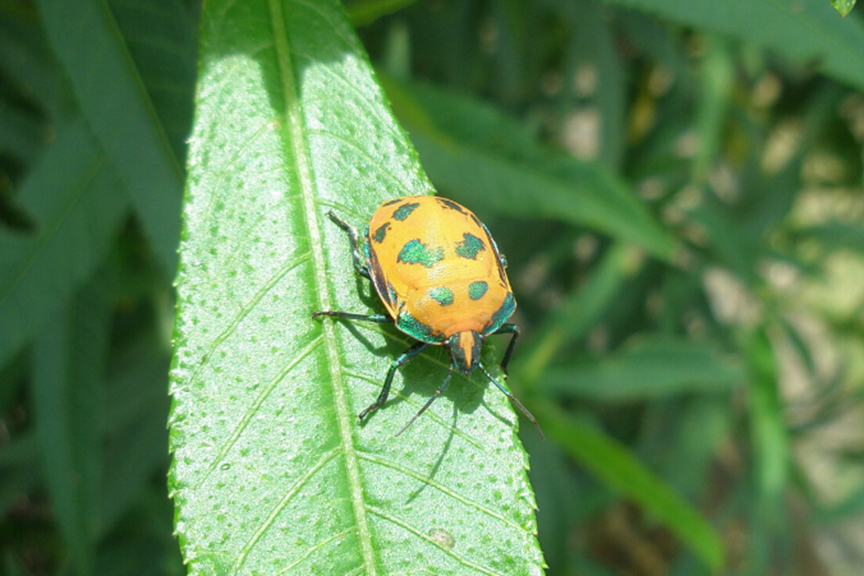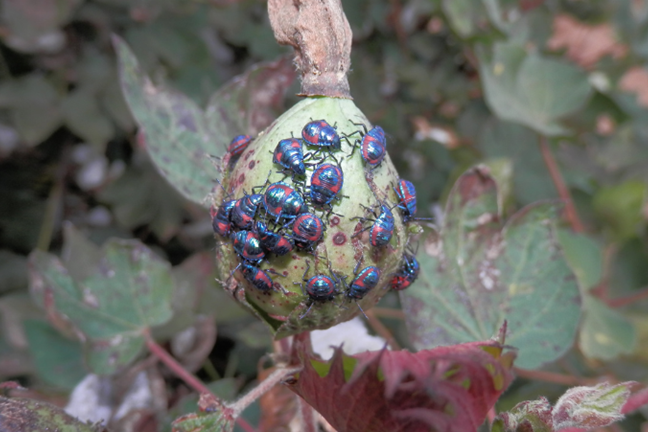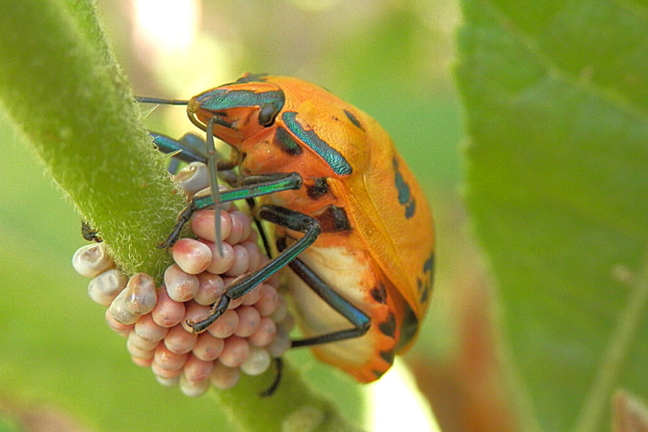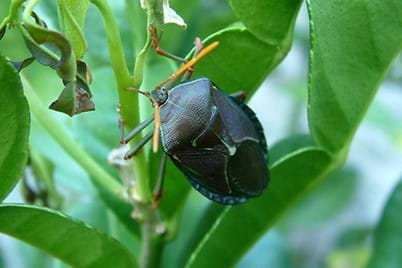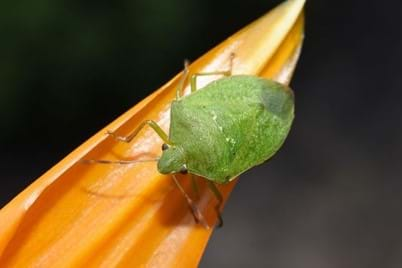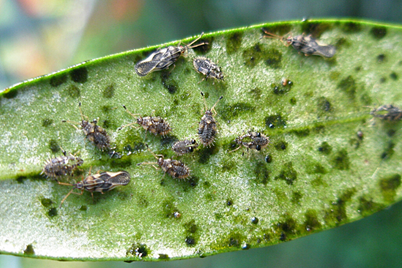Adult Cotton Harlequin Bugs are brightly coloured insects up to 15–20mm long with a pronounced convex shape, therefore, humped. Females are larger than males and female colouring is mostly orange with small iridescent blue-green patches of varying size. Males are a mix of metallic green-blue and orange-red.
First instar nymphs emerge with bright red abdomens and metallic blue thoraxes, and change to a predominantly metallic blue pattern with red markings in later instars.
There is considerable colour variation between tropical and temperate regions. In tropical regions female Cotton Harlequin Bugs are usually entirely orange, therefore, without the small iridescent blue-green markings. In subtropical regions the iridescent patches are present but reduced compared to females in the temperate regions, which have the largest iridescent blue-green patches.
In tropical regions male Cotton Harlequin Bugs are usually red–orange with small blue-green patches, while in temperate regions males may be mostly blue-green with small red-orange patches.
Colour variation may also occur within a single population.
All life stages of Cotton Harlequin Bugs exude a pungent defensive fluid when threatened. Research has shown that the defensive fluid is an effective deterrent against birds, but not predatory insects such as mantids. The fluid is not as pungent or as staining as the notorious fluid produced by Bronze Orange Bugs.
The Harlequin Bug (Dindymus versicolor) of south-eastern Australia is a very different looking insect. Dindymus versicolor is a slender bug about 12 mm long, and is either black and red, or black and orange.
